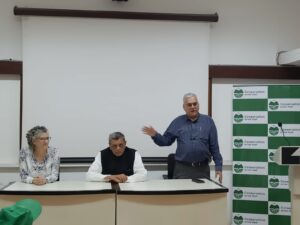Mangrove forests evolved where two of the most contrasting environments on earth meet – the interface between the land and sea.
Needless to say this “harsh space between the tides”* requires exceptional adaptations for life to survive and thrive.
Complex order in dynamic systems
Within the relatively small space between land and sea the physical and chemical conditions can change significantly within short periods of time, offering structurally complex and heterogeneous landscapes for mangrove species to adapt to.
With mangrove forests comprised of multiple species – especially in Southeast-Asia – it is tempting to think of jumbled communities of diverse trees living alongside each other. However, species generally evolve to occupy certain niches within complex environments and in mangroves, niche preferences are broadly determined by diverse gradients of salinity, lengths of inundation and severity of drought, among others. Mangrove forests therefore exhibit a certain order within diverse and dynamic systems.
Ecosystem engineers
While the physical environment lays the foundations and draw limits for how and where mangroves thrive, as ‘ecosystem engineers’ mangroves themselves are partially responsible for shaping their physical environment.
The highly structured roots of mangroves facilitate the trapping of sediments (i.e. from rivers) and organic debris, which can lead to soil build-up, land surface accretion and even elevation (due to roots growing below the surface). This property enables mangroves in some areas to keep up with sea level rise, making them invaluable engineers for climate resilient coasts.
Securing offspring survival
When ripe, the seeds of many mangrove trees are faced with immediate submersion and poor prospects of easily tapping into vital resources. But evolution has created ingenious ways in which offspring can have the highest chances of survival.
Some seeds are buoyant and, after a certain period of time spent floating, will switch from a horizontal to a vertical position. This enables them to disperse initially and later retain footing in the sediment more easily. Other seeds are viviparous, meaning by the time the seed falls, it will have already sprouted and started to grow as a sapling. The initial resources to ensure a good start to life will have been provided by the parent tree.
Space for biodiversity
Mangroves create a remarkably diverse habitat, with the unique property of combining animal species of terrestrial and marine environment in a single ecosystem. Main taxonomic groups range from insects, molluscs and crustaceans to fish, reptiles, birds and mammals. Mangroves are rich in food and provide shelter to offshore species which use their complex structures as nurseries (well-known examples are shrimp and some species of coral fish and sharks). But that is not all. Mangroves also provide terrestrial habitat for many species. The vast mangroves of the Sundarbans (Bangladesh and India), for example, currently host the largest intact tiger population in the world.
Mangrove ecosystems cover a relatively small area on a global scale, but they are remarkably evolved ecosystems with many physical and biological properties which are well worth conserving.
For more on mangroves and restoration
*Quote from the book ‘World Atlas of Mangroves‘ by Marc Spalding et al. (2010), which most of this blog’s content is derived from.


